Snowboard Helmets
- - 29 %
 Sweet ProtectionSwitcher MIPS Ski-/Snowboard Helmet Gloss WhiteMSRP 268,95 €189,95 €Available Sizes:M
Sweet ProtectionSwitcher MIPS Ski-/Snowboard Helmet Gloss WhiteMSRP 268,95 €189,95 €Available Sizes:M - - 30 %
 Sweet ProtectionIgniter 2Vi MIPS Ski-/Snowboard Helmet Dirt BlackMSRP 248,95 €174,95 €Available Sizes:M
Sweet ProtectionIgniter 2Vi MIPS Ski-/Snowboard Helmet Dirt BlackMSRP 248,95 €174,95 €Available Sizes:M - - 29 %
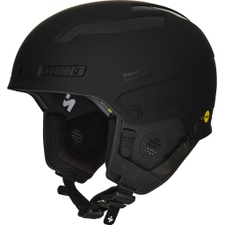 Sweet ProtectionTrooper 2VI MIPS Ski-/Snowboard Helmet Dirt BlackMSRP 318,95 €224,95 €Available Sizes:S
Sweet ProtectionTrooper 2VI MIPS Ski-/Snowboard Helmet Dirt BlackMSRP 318,95 €224,95 €Available Sizes:S - - 20 %
 SalomonDriver Pro Sigma MIPS Ski-/Snowboard Helmet Black / Black BronzeMSRP 299,95 €239,95 €Available Sizes:S
SalomonDriver Pro Sigma MIPS Ski-/Snowboard Helmet Black / Black BronzeMSRP 299,95 €239,95 €Available Sizes:S - - 19 %
 POCObex BC MIPS Ski-/Snowboard Helmet Uranium BlackMSRP 269,95 €219,95 €Available Sizes:XS
POCObex BC MIPS Ski-/Snowboard Helmet Uranium BlackMSRP 269,95 €219,95 €Available Sizes:XS - - 11 %
 POCAuric Cut Ski-/Snowboard Helmet Matt WhiteMSRP 179,95 €159,95 €Available Sizes:XSXXL
POCAuric Cut Ski-/Snowboard Helmet Matt WhiteMSRP 179,95 €159,95 €Available Sizes:XSXXL - - 29 %
 Sweet ProtectionTrooper 2VI MIPS Ski-/Snowboard Helmet Matte Bronco WhiteMSRP 318,95 €224,95 €Available Sizes:M
Sweet ProtectionTrooper 2VI MIPS Ski-/Snowboard Helmet Matte Bronco WhiteMSRP 318,95 €224,95 €Available Sizes:M - - 13 %
 POCAuric Cut BC MIPS Ski-/Snowboard Helmet Hydrogen White MattMSRP 229,95 €199,95 €Available Sizes:XSXXL
POCAuric Cut BC MIPS Ski-/Snowboard Helmet Hydrogen White MattMSRP 229,95 €199,95 €Available Sizes:XSXXL - - 56 %
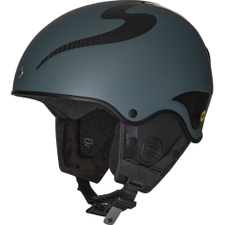 Sweet ProtectionRooster II MIPS Aksel Ski-/Snowboard Helmet Stormy WeatherMSRP 648,95 €284,95 €Available Sizes:SM
Sweet ProtectionRooster II MIPS Aksel Ski-/Snowboard Helmet Stormy WeatherMSRP 648,95 €284,95 €Available Sizes:SM - - 13 %
 POCAuric Cut BC MIPS Ski-/Snowboard Helmet Uranium Black MattMSRP 229,95 €199,95 €Available Sizes:XSXXL
POCAuric Cut BC MIPS Ski-/Snowboard Helmet Uranium Black MattMSRP 229,95 €199,95 €Available Sizes:XSXXL - - 30 %
 Sweet ProtectionGrimnir 2Vi MIPS Ski-/Snowboard Helmet Natural CarbonMSRP 448,95 €314,95 €Available Sizes:S
Sweet ProtectionGrimnir 2Vi MIPS Ski-/Snowboard Helmet Natural CarbonMSRP 448,95 €314,95 €Available Sizes:S - - 30 %
 Sweet ProtectionIgniter 2Vi MIPS Ski-/Snowboard Helmet Matte Bronco WhiteMSRP 248,95 €174,95 €Available Sizes:S
Sweet ProtectionIgniter 2Vi MIPS Ski-/Snowboard Helmet Matte Bronco WhiteMSRP 248,95 €174,95 €Available Sizes:S - - 32 %
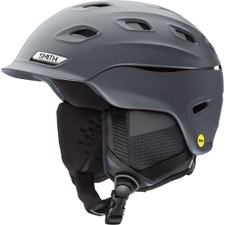 SmithVantage MIPS Ski-/Snowboard Helmet Matte SlateMSRP 249,95 €169,95 €Available Sizes:S
SmithVantage MIPS Ski-/Snowboard Helmet Matte SlateMSRP 249,95 €169,95 €Available Sizes:S - - 30 %
 SalomonDriver Prime Sigma Photochromic MIPS Ski-/Snowboard Helmet NightshadeMSRP 379,95 €264,95 €Available Sizes:S
SalomonDriver Prime Sigma Photochromic MIPS Ski-/Snowboard Helmet NightshadeMSRP 379,95 €264,95 €Available Sizes:S - - 30 %
 SalomonHusk Prime MIPS Ski-/Snowboard Helmet Rainy DayMSRP 249,95 €174,95 €Available Sizes:L
SalomonHusk Prime MIPS Ski-/Snowboard Helmet Rainy DayMSRP 249,95 €174,95 €Available Sizes:L - - 14 %
 POCSkull Dura X MIPS Ski-/Snowboard Helmet Hydrogen WhiteMSRP 279,95 €239,95 €Available Sizes:XXL
POCSkull Dura X MIPS Ski-/Snowboard Helmet Hydrogen WhiteMSRP 279,95 €239,95 €Available Sizes:XXL - - 29 %
 Sweet ProtectionTrooper 2VI MIPS Ski-/Snowboard Helmet Matte Burning OrangeMSRP 318,95 €224,95 €Available Sizes:S
Sweet ProtectionTrooper 2VI MIPS Ski-/Snowboard Helmet Matte Burning OrangeMSRP 318,95 €224,95 €Available Sizes:S - - 30 %
 Sweet ProtectionIgniter 2Vi MIPS Ski-/Snowboard Helmet WoodlandMSRP 248,95 €174,95 €Available Sizes:S
Sweet ProtectionIgniter 2Vi MIPS Ski-/Snowboard Helmet WoodlandMSRP 248,95 €174,95 €Available Sizes:S - - 31 %
 SmithNexus MIPS Ski-/Snowboard Helmet Matte Slate / BlackMSRP 324,95 €224,95 €Available Sizes:S
SmithNexus MIPS Ski-/Snowboard Helmet Matte Slate / BlackMSRP 324,95 €224,95 €Available Sizes:S - - 19 %
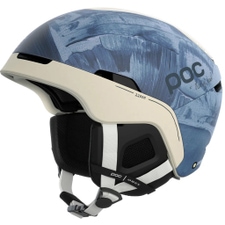 POCObex BC MIPS Ski-/Snowboard Helmet Hedvig Wessel ED. / Store SkagastølstindMSRP 269,95 €219,95 €Available Sizes:XSLXXL
POCObex BC MIPS Ski-/Snowboard Helmet Hedvig Wessel ED. / Store SkagastølstindMSRP 269,95 €219,95 €Available Sizes:XSLXXL - - 31 %
 SmithNexus MIPS Ski-/Snowboard Helmet Matte BlackMSRP 324,95 €224,95 €Available Sizes:S
SmithNexus MIPS Ski-/Snowboard Helmet Matte BlackMSRP 324,95 €224,95 €Available Sizes:S - - 25 %
 POCLevator MIPS Ski-/Snowboard Helmet Uranium Black MattMSRP 549,95 €409,95 €Available Sizes:XS
POCLevator MIPS Ski-/Snowboard Helmet Uranium Black MattMSRP 549,95 €409,95 €Available Sizes:XS - - 30 %
 POCCalyx MIPS Ski-/Snowboard Helmet Uranium Black MattMSRP 249,95 €174,95 €Available Sizes:XS
POCCalyx MIPS Ski-/Snowboard Helmet Uranium Black MattMSRP 249,95 €174,95 €Available Sizes:XS - - 30 %
 AtomicSavor GT Amid Visor HD Ski-/Snowboard Helmet GreyMSRP 329,95 €229,95 €Available Sizes:55
AtomicSavor GT Amid Visor HD Ski-/Snowboard Helmet GreyMSRP 329,95 €229,95 €Available Sizes:55
- - 31 %
 SmithNexus MIPS Ski-/Snowboard Helmet Matte White / SlateMSRP 324,95 €224,95 €Available Sizes:S
SmithNexus MIPS Ski-/Snowboard Helmet Matte White / SlateMSRP 324,95 €224,95 €Available Sizes:S - - 15 %
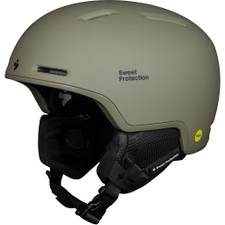 Sweet ProtectionLooper Mips Ski-/Snowboard Helmet WoodlandMSRP 188,95 €160,60 €Available Sizes:SM
Sweet ProtectionLooper Mips Ski-/Snowboard Helmet WoodlandMSRP 188,95 €160,60 €Available Sizes:SM - - 32 %
 SmithVantage MIPS Ski-/Snowboard Helmet Matte Chalk Rose WomenMSRP 249,95 €169,95 €Available Sizes:SM
SmithVantage MIPS Ski-/Snowboard Helmet Matte Chalk Rose WomenMSRP 249,95 €169,95 €Available Sizes:SM - - 30 %
 AtomicSavor GT Amid Visor HD Ski-/Snowboard Helmet PurpleMSRP 329,95 €229,95 €Available Sizes:55
AtomicSavor GT Amid Visor HD Ski-/Snowboard Helmet PurpleMSRP 329,95 €229,95 €Available Sizes:55
- - 41 %
 GiroTor Spherical MIPS Ski-/Snowboard Helmet Matte Trail GreenMSRP 279,95 €164,95 €Available Sizes:S
GiroTor Spherical MIPS Ski-/Snowboard Helmet Matte Trail GreenMSRP 279,95 €164,95 €Available Sizes:S - - 25 %
 POCSkull Dura Comp MIPS Ski-/Snowboard Helmet Hydrogen WhiteMSRP 479,95 €359,95 €Available Sizes:XSL
POCSkull Dura Comp MIPS Ski-/Snowboard Helmet Hydrogen WhiteMSRP 479,95 €359,95 €Available Sizes:XSL - - 30 %
 AtomicSavor GT Amid Visor HD Ski-/Snowboard Helmet GreenMSRP 329,95 €229,95 €Available Sizes:55
AtomicSavor GT Amid Visor HD Ski-/Snowboard Helmet GreenMSRP 329,95 €229,95 €Available Sizes:55
- - 30 %
 POCCalyx MIPS Ski-/Snowboard Helmet Selentine Off-White MattMSRP 249,95 €174,95 €Available Sizes:XSLXXL
POCCalyx MIPS Ski-/Snowboard Helmet Selentine Off-White MattMSRP 249,95 €174,95 €Available Sizes:XSLXXL - - 15 %
 Sweet ProtectionLooper Mips Ski-/Snowboard Helmet PantherMSRP 188,95 €160,60 €Available Sizes:SM
Sweet ProtectionLooper Mips Ski-/Snowboard Helmet PantherMSRP 188,95 €160,60 €Available Sizes:SM - - 25 %
 POCFornix MIPS Ski-/Snowboard Helmet Uranium Black MattMSRP 199,95 €149,95 €Available Sizes:XS
POCFornix MIPS Ski-/Snowboard Helmet Uranium Black MattMSRP 199,95 €149,95 €Available Sizes:XS - - 67 %
 AlpinaParsena Ski-/Snowboard Helmet Denim Grey MattMSRP 149,95 €49,95 €Available Sizes:56
AlpinaParsena Ski-/Snowboard Helmet Denim Grey MattMSRP 149,95 €49,95 €Available Sizes:56 - - 25 %
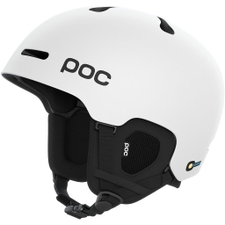 POCFornix MIPS Ski-/Snowboard Helmet Hydrogen White MattMSRP 199,95 €149,95 €Available Sizes:XS
POCFornix MIPS Ski-/Snowboard Helmet Hydrogen White MattMSRP 199,95 €149,95 €Available Sizes:XS - - 25 %
 POCFornix MIPS Ski-/Snowboard Helmet Lead Blue MattMSRP 199,95 €149,95 €Available Sizes:XS
POCFornix MIPS Ski-/Snowboard Helmet Lead Blue MattMSRP 199,95 €149,95 €Available Sizes:XS - - 70 %
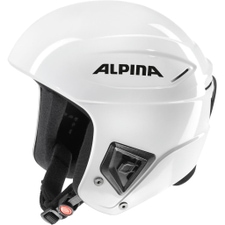 AlpinaDownhill Comp Ski-/Snowboard Helmet WhiteMSRP 189,95 €56,95 €Available Sizes:52
AlpinaDownhill Comp Ski-/Snowboard Helmet WhiteMSRP 189,95 €56,95 €Available Sizes:52 - - 25 %
 POCObex MIPS Ski-/Snowboard Helmet Uranium Black MattMSRP 199,95 €149,95 €Available Sizes:XS
POCObex MIPS Ski-/Snowboard Helmet Uranium Black MattMSRP 199,95 €149,95 €Available Sizes:XS - - 29 %
 SmithScout Ski-/Snowboard Helmet Matte BlackMSRP 84,95 €59,95 €Available Sizes:S
SmithScout Ski-/Snowboard Helmet Matte BlackMSRP 84,95 €59,95 €Available Sizes:S - - 40 %
 POCFornix MIPS Ski-/Snowboard Helmet Cerussite Kashima MattMSRP 199,90 €119,95 €Available Sizes:XS
POCFornix MIPS Ski-/Snowboard Helmet Cerussite Kashima MattMSRP 199,90 €119,95 €Available Sizes:XS - - 30 %
 POCObex MIPS Ski-/Snowboard Helmet Epidote Green MattMSRP 199,90 €139,95 €Available Sizes:XS
POCObex MIPS Ski-/Snowboard Helmet Epidote Green MattMSRP 199,90 €139,95 €Available Sizes:XS - - 35 %
 AlpinaKroon MIPS Ski-/Snowboard Helmet Black MattMSRP 129,95 €84,95 €Available Sizes:55
AlpinaKroon MIPS Ski-/Snowboard Helmet Black MattMSRP 129,95 €84,95 €Available Sizes:55 - - 31 %
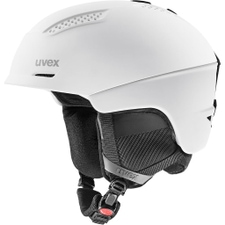 UvexUltra Ski-/Snowboard Helmet White / BlackMSRP 159,95 €109,95 €Available Sizes:55
UvexUltra Ski-/Snowboard Helmet White / BlackMSRP 159,95 €109,95 €Available Sizes:55 - - 30 %
 GiroLedge FS Ski-/Snowboard Helmet Matte Habour BlueMSRP 99,95 €69,95 €Available Sizes:S
GiroLedge FS Ski-/Snowboard Helmet Matte Habour BlueMSRP 99,95 €69,95 €Available Sizes:S - - 25 %
 POCFornix MIPS Pow JJ Ski-/Snowboard Helmet Bismuth Green MattMSRP 199,95 €149,95 €Available Sizes:XS
POCFornix MIPS Pow JJ Ski-/Snowboard Helmet Bismuth Green MattMSRP 199,95 €149,95 €Available Sizes:XS - - 33 %
 SmithAltus Ski-/Snowboard Helmet Matte Black CharcoalMSRP 149,95 €99,95 €Available Sizes:S
SmithAltus Ski-/Snowboard Helmet Matte Black CharcoalMSRP 149,95 €99,95 €Available Sizes:S - - 39 %
 GiroEmerge Spherical Ski-/Snowboard Helmet Matte BlackMSRP 179,95 €109,95 €Available Sizes:S
GiroEmerge Spherical Ski-/Snowboard Helmet Matte BlackMSRP 179,95 €109,95 €Available Sizes:S - - 20 %
 AlpinaBrix Ski-/Snowboard Helmet Black MattMSRP 99,95 €79,95 €Available Sizes:55
AlpinaBrix Ski-/Snowboard Helmet Black MattMSRP 99,95 €79,95 €Available Sizes:55 - - 30 %
 SmithLevel MIPS Ski-/Snowboard Helmet Matte WhiteMSRP 199,95 €139,95 €Available Sizes:S
SmithLevel MIPS Ski-/Snowboard Helmet Matte WhiteMSRP 199,95 €139,95 €Available Sizes:S - - 20 %
 AlpinaZupo Ski-/Snowboard Helmet Blue Matt KidsMSRP 64,95 €51,95 €Available Sizes:52
AlpinaZupo Ski-/Snowboard Helmet Blue Matt KidsMSRP 64,95 €51,95 €Available Sizes:52 - - 50 %
 AlpinaGems Ski-/Snowboard Helmet Moon Grey / MattMSRP 169,95 €84,95 €Available Sizes:55
AlpinaGems Ski-/Snowboard Helmet Moon Grey / MattMSRP 169,95 €84,95 €Available Sizes:55 - - 35 %
 AlpinaBanff MIPS Ski-/Snowboard Helmet Black MattMSRP 199,95 €129,95 €Available Sizes:5563
AlpinaBanff MIPS Ski-/Snowboard Helmet Black MattMSRP 199,95 €129,95 €Available Sizes:5563 - - 35 %
 AlpinaKroon MIPS Ski-/Snowboard Helmet Moon Grey MattMSRP 129,95 €84,95 €Available Sizes:5563
AlpinaKroon MIPS Ski-/Snowboard Helmet Moon Grey MattMSRP 129,95 €84,95 €Available Sizes:5563 - - 50 %
 UvexWanted Ski-/Snowboard Helmet Rhino MattMSRP 99,95 €49,95 €Available Sizes:58
UvexWanted Ski-/Snowboard Helmet Rhino MattMSRP 99,95 €49,95 €Available Sizes:58 - - 25 %
 POCObex Mips Ski-/Snowboard Helmet Hydrogen WhiteMSRP 199,95 €149,95 €Available Sizes:XSLXXL
POCObex Mips Ski-/Snowboard Helmet Hydrogen WhiteMSRP 199,95 €149,95 €Available Sizes:XSLXXL - - 25 %
 POCFornix Ski-/Snowboard Helmet Uranium BlackMSRP 179,95 €134,95 €Available Sizes:XSXXL
POCFornix Ski-/Snowboard Helmet Uranium BlackMSRP 179,95 €134,95 €Available Sizes:XSXXL - - 25 %
 SalomonOkra Ski-/Snowboard Helmet Bleached Aqua KidsMSRP 59,95 €44,95 €Available Sizes:S
SalomonOkra Ski-/Snowboard Helmet Bleached Aqua KidsMSRP 59,95 €44,95 €Available Sizes:S - - 31 %
 ScottChase 2 Ski-/Snowboard Helmet Aspen BlueMSRP 129,95 €89,95 €Available Sizes:S
ScottChase 2 Ski-/Snowboard Helmet Aspen BlueMSRP 129,95 €89,95 €Available Sizes:S - - 31 %
 UvexUltra Ski-/Snowboard Helmet Bramble MattMSRP 159,95 €109,95 €Available Sizes:55
UvexUltra Ski-/Snowboard Helmet Bramble MattMSRP 159,95 €109,95 €Available Sizes:55 - - 50 %
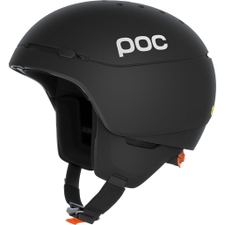 POCMeninx RS MIPS Ski-/Snowboard Helmet Uranium Black MattMSRP 279,95 €139,95 €Available Sizes:XSL
POCMeninx RS MIPS Ski-/Snowboard Helmet Uranium Black MattMSRP 279,95 €139,95 €Available Sizes:XSL - - 50 %
 POCMeninx Ski-/Snowboard Helmet Uranium Black MattMSRP 229,90 €114,95 €Available Sizes:XS
POCMeninx Ski-/Snowboard Helmet Uranium Black MattMSRP 229,90 €114,95 €Available Sizes:XS - - 20 %
 SalomonBrigade MIPS Ski-/Snowboard Helmet Olive NightMSRP 149,95 €119,95 €Available Sizes:S
SalomonBrigade MIPS Ski-/Snowboard Helmet Olive NightMSRP 149,95 €119,95 €Available Sizes:S - - 38 %
 SalomonHusk Pro Ski-/Snowboard Helmet BlackMSRP 159,95 €99,95 €Available Sizes:S
SalomonHusk Pro Ski-/Snowboard Helmet BlackMSRP 159,95 €99,95 €Available Sizes:S - - 29 %
 SalomonBrigarde Ski-/Snowboard Helmet Tropical PeachMSRP 119,95 €84,95 €Available Sizes:M
SalomonBrigarde Ski-/Snowboard Helmet Tropical PeachMSRP 119,95 €84,95 €Available Sizes:M - - 20 %
 GiroCrüe Ski-/Snowboard Helmet Ano Lime KidsMSRP 89,95 €71,95 €Available Sizes:S
GiroCrüe Ski-/Snowboard Helmet Ano Lime KidsMSRP 89,95 €71,95 €Available Sizes:S - - 21 %
 POCPocito Skull Ski-/Snowboard Helmet Fluorescent Orange KidsMSRP 169,95 €134,95 €Available Sizes:S
POCPocito Skull Ski-/Snowboard Helmet Fluorescent Orange KidsMSRP 169,95 €134,95 €Available Sizes:S - - 37 %
 JulboNew Testival Product The Peak LT Ski-/Snowboard Helmet Grau / WeissMSRP 189,90 €119,95 €Available Sizes:5658
JulboNew Testival Product The Peak LT Ski-/Snowboard Helmet Grau / WeissMSRP 189,90 €119,95 €Available Sizes:5658 - - 35 %
 AlpinaKroon MIPS Ski-/Snowboard Helmet White MattMSRP 129,95 €84,95 €Available Sizes:55
AlpinaKroon MIPS Ski-/Snowboard Helmet White MattMSRP 129,95 €84,95 €Available Sizes:55 - - 37 %
 JulboNew Testival Product The Peak LT Ski-/Snowboard Helmet Weiss / SchwarzMSRP 189,90 €119,95 €Available Sizes:5660
JulboNew Testival Product The Peak LT Ski-/Snowboard Helmet Weiss / SchwarzMSRP 189,90 €119,95 €Available Sizes:5660 - - 32 %
 AtomicFour Amid Pro Ski-/Snowboard Helmet GreyMSRP 189,95 €129,95 €Available Sizes:63
AtomicFour Amid Pro Ski-/Snowboard Helmet GreyMSRP 189,95 €129,95 €Available Sizes:63
- - 27 %
 POCObex Pure Ski-/Snowboard Helmet Uranium Black MattMSRP 149,95 €109,95 €Available Sizes:XSLXXL
POCObex Pure Ski-/Snowboard Helmet Uranium Black MattMSRP 149,95 €109,95 €Available Sizes:XSLXXL



Whether on the slopes or off, a helmet can protect you from serious head injuries. The different models are suitable for different uses. To ensure that you are optimally protected, it is important to know which snowboard helmet is the right one for your activities. When choosing helmets, it is not so easy to keep track, so we have summarized the most important features for you here:
How is my snowboard helmet constructed?
If you are looking for a snowboard helmet, you have three constructions to choose from:
Hard shell: In this case, the helmet consists of two separate shells: an outer shell and an inner shell. During production, these are then glued together with the help of an intermediate grid and thus guarantee you optimal energy absorption. This production method also has the advantage that your snowboard helmet is better ventilated and in the event of a strong impact, the energy is better distributed over the entire helmet. Hardshell models tend to be in a higher price segment compared to an In-Mold construction and are very suitable due to their protective function if you are often out freeriding or in the park.
In-Mold: With the In-Mold construction, on the other hand, the outer and inner shells are welded directly together, which makes the helmet stable. Additionally, this type of helmet has a relatively low weight. However, they offer less necessary protection in the event of an impact and are therefore more recommended for alpine use on the slopes.
Hybrid: Hybrid helmets usually have a hard shell and are combined with an in-mold construction in the lower part. Hybrid technology combines all the safety features of both constructions. Above all, these models are very robust and have a light weight.
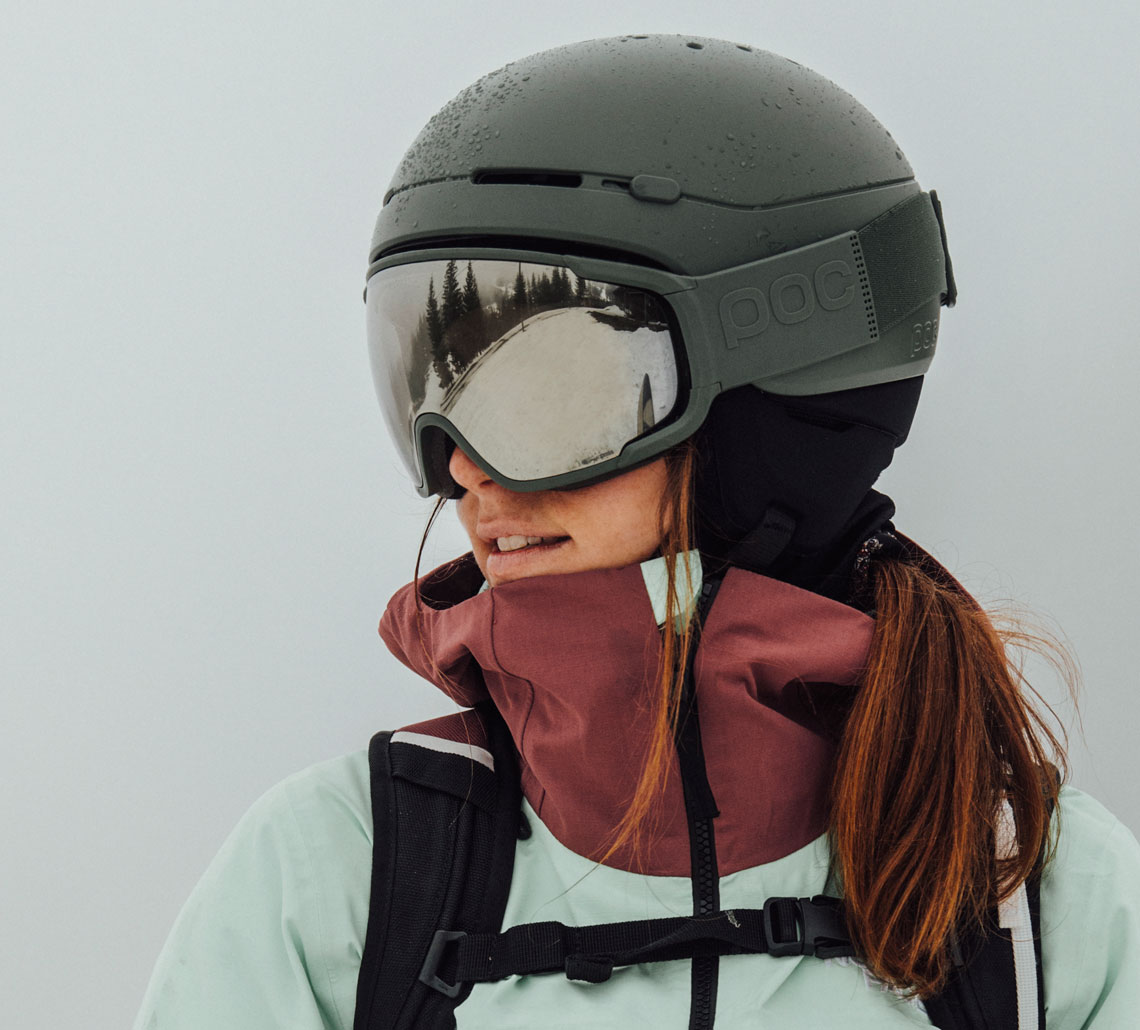
Which features does my snowboard helmet offer?
When it comes to helmet construction and outer layer, you have to choose one of the three options mentioned above. In addition, you can then freely choose which inner equipment your helmet should have. Here you should think carefully about which features you particularly value.
You've probably heard the term "MIPS" in snowboard helmets before. MIPS stands for Multi-Directional Impact Protection System. Here, a low-friction shell is integrated into the helmet, which has a range of motion of a few millimeters. This can reduce the rotational forces acting on your head in the event of an accident. This is one of the most important safety features you should look out for. FYI, in addition to MIPS, there are also the Spin Pads, which were patented by POC, yet are intended to serve the same purpose.
Another feature you should look for when choosing snowboard helmets is size adjustability. An optimal design is of little use if the helmet doesn't fit your head shape, so it's not only important to choose the right size (by measuring the circumference of your head in cm), but also to think about the option of a size-adjustable dial on the back of the helmet.
There are also different ventilation options for helmets. They differ according to the number of ventilation openings in the helmet, and in some helmets can even be regulated with a regulator.
In addition to the technical safety features, the appearance also plays a role, of course. Whether you choose a helmet with a warm lining, visor, with extra snowboard goggles or a special color: It's a question of your style.

When is it time for a new snowboard helmet?
You think a snowboard helmet is a one-time investment? Then we have to disappoint you, because helmets should be replaced regularly. Especially after a crash, the shell of your helmet can break or at least get small cracks. If you then fall again, the helmet no longer guarantees you safety. But even without an accident, it is advisable to replace your helmet every three to five years, as the materials can become brittle.
At Sport-Conrad you will find all constructions and models from various manufacturers such as Alpina, Giro, POC, Sweet Protection and many more. So go ahead - helmet on, goggles down and out into the snow.